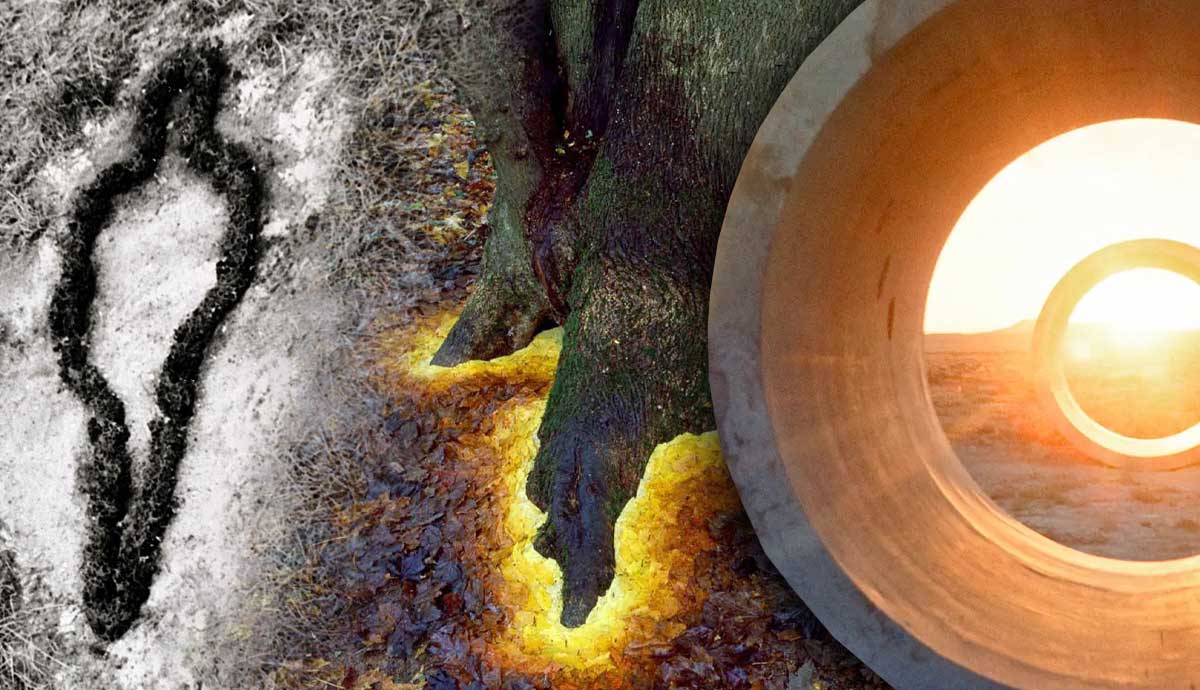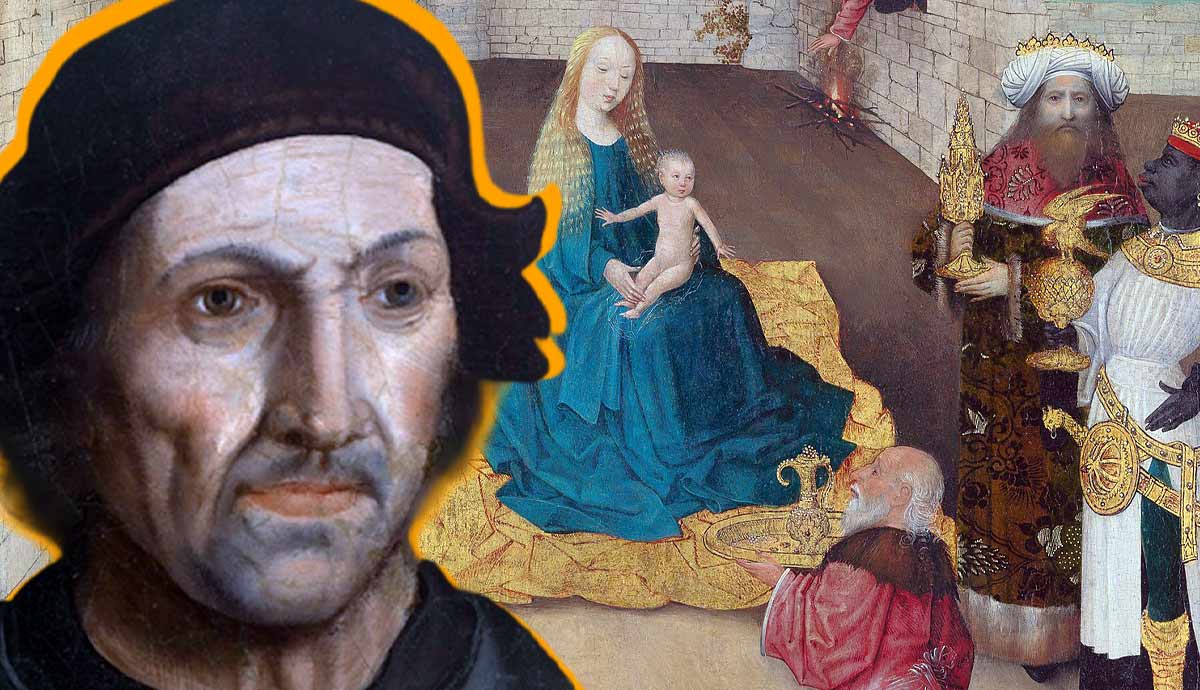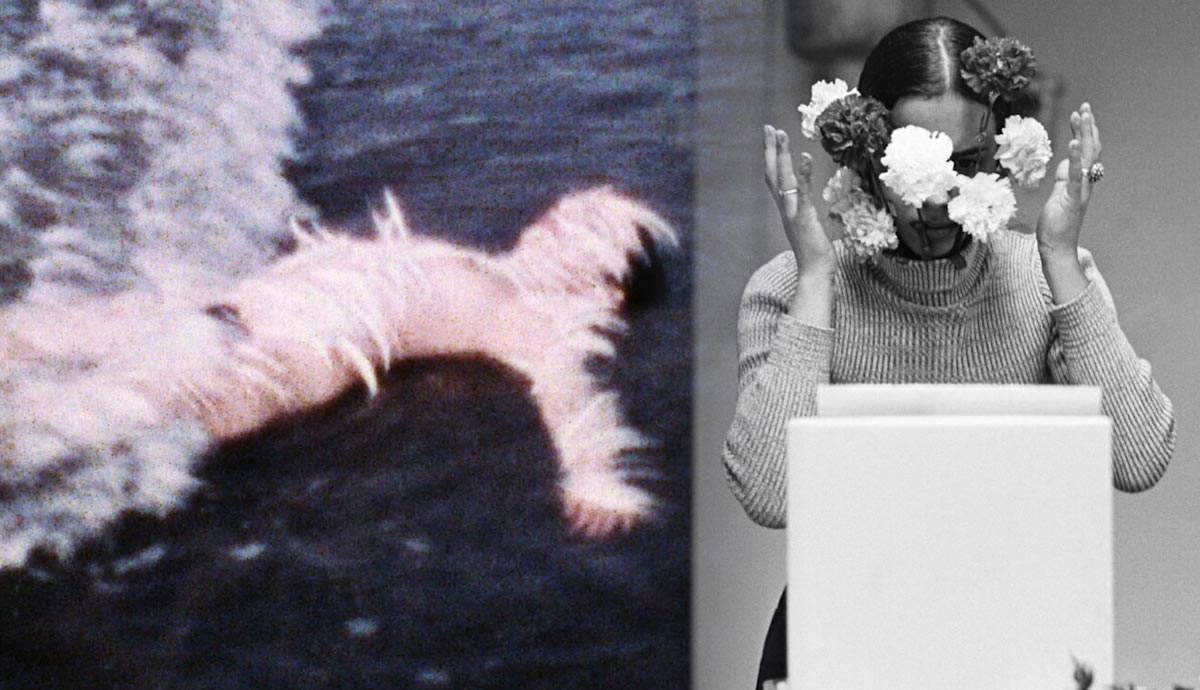
Land Art, also known as Earth Art, is a name applied to artworks that operate within the natural realm rather than in artistic studios, using earth, stones, and other natural materials. In some ways, Land Art was a category of art rather than a coherent movement. Artists who worked with landscapes had different philosophies and varying degrees of personal involvement. Read on to learn more about the most important names of Land Art.
What Is Land Art?

The Land Art movement appeared in the 1960s in the US as an act of protest against the suffocating art market and commodification of art. Artists rejected the traditional notion of art galleries, museums, and auctions, creating site-specific installations outdoors, intrinsically connected to natural landscapes. Land artists rarely used conventional artistic materials, relying mostly on natural substances like sand, stone, earth, and water. The preservation of their artworks was none of their concern: the key objective was to leave the created structures to exist in their natural environment, adapting or succumbing to it. Some of these works stood out of the scene around them, and others were almost indistinguishable from the natural realm. Land art was both an ecologically conscious gesture and a reference to the prehistoric art and remains of ancient civilizations.
Land Art as a movement presented a significant challenge to museum curators and their audiences. How do you present something that is so intrinsically connected to the immobile aspects of nature and often has a short lifespan? How can you categorize and systemize something so fleeting and non-uniform? From the beginning of the Land Art movement’s emergence, photography played a key role in documenting it, yet inevitably diminished the real impression of artworks. The necessary compromise, on the one hand, affected the movement’s perception, but on the other, legitimized it by making it available for the art market in the form of photographs. Here are six land artists you should know.
1. Donald Judd

Donald Judd was the artist most closely associated with the movement of Minimalism. This movement, focused on pure geometric form, made a sensation on the New York art scene, rapidly making Judd a celebrity and one of the most accomplished painters of his time. Still, popularity brought the devaluation of meanings, overwhelming commodification, and the rising number of copycat artists, jumping on a hot trend.
Judd’s work in the 1970s represented the intermediary state between Minimalism and Land Art in their purest forms. In that decade, he started buying land in Marfa, Texas, experimenting with placing his work in empty natural spaces. Although his principal material at the time was concrete, the way his works interacted with the space around them corresponded to the basic principles of Land Art.
2. Ana Mendieta

Cuban-American artist Ana Mendieta was never formally a part of the Land Art movement and hardly ever intended to be. She was an independent artist who preferred to work outside of the conventional categories of art, movements, and formats. Born in Havana, she was sent to the US as a teenager to avoid the turmoil of the Cuban Revolution. Mendieta was disconnected from her home for almost twenty years before setting foot on her native land again.
Mendieta carried the pain of a child abruptly torn out of her home and family through the entirety of her life and career. From her early works, she tried to re-establish contact with her roots by interacting with nature. One of her most famous series called Silueta features a collection of artist’s body prints made in grass, earth, clay, or on other natural surfaces. Mendieta’s silhouette would inevitably dissolve within hours, if not minutes, going back to the realm it came from. For Ana Mendieta, death and decay were not necessarily scary. Rather, they signified the return to the natural order, rebirth, and the continuous flow of life. Apart from her photographs, she left a series of paintings in remote Cuban caves, which are still being located by art historians.
3. Walter de Maria

Another Minimalist on our list, Walter de Maria, developed his practice to include land art quite early. Apart from textures and forms of the natural versus manmade realms, he was interested in light and weather and their possible implementation in artistic practice. The idea of a dialogue between man and nature resulted in one of the most famous pieces of land art: the installation titled The Lightning Field. In a vast New Mexico desert, de Maria arranged 400 stainless steel poles. Poles have varying lengths, but each of them has a concrete base and is fixed to withstand the most severe weather conditions that could possibly occur in New Mexico. During the day, poles divide the seemingly endless space into equally sized sections. Their primary function, however, reveals itself during stormy nights, when the poles start to attract lightning, turning the entire plateau into a roaring and shining extra-terrestrial space.
The Lightning Field is still available for visitors, although, due to the format of the work, the experience is significantly more complicated than going to a museum. The observation of de Maria’s work takes an entire day and a night spent in a cabin near the field. For a fee of $150 per person, up to six guests can stay overnight and observe the installation. No one, however, can promise you the lightning.
4. Robert Smithson

Robert Smithson tried his hand in almost every art movement and style of his era—from Pop Art canvases to neon lamp sculptures. However, he became best known as the most prominent figure of Land Art. Still, his most successful artworks emerged when he exchanged the walls of his studio for natural landscapes in the US and abroad. For Smithson, the most important concept for his work was entropy—the inevitable disorder that would come to any existing element. Thus, his artworks were supposed to age and decay naturally, without external involvement.
In his land art practice, Smithson became preoccupied with the dialogue between human-made industry and nature. Many of his projects were made in spaces affected by the extraction of certain sources or harmful production. Particularly, his most famous work, the icon of land art known as Spiral Jetty, a spiral made from stone, salt, and mud, was constructed next to an abandoned oil jetty on the Great Salt Lake in Utah. Spiral Jetty had a long and remarkable life despite its seeming fragility. Due to the changes in water level, the 1500-foot-long structure disappeared underwater in 1972, emerging only in the early 2000s after a continuous period of drought in Utah. Today, art conservators are looking for ways to preserve Spiral Jetty as the most important work of the Land Art movement. Some regard this ambition as unethical due to Smithson’s own creative practices and opinions on entropy.
5. Nancy Holt

Holt’s principal artistic preoccupations were the ways and instruments of seeing. Her structures—tunnels, tubes, and reflective surfaces—focused the visitors’ attention on the particular aspect of a landscape around them, a specific play of proportions, or the trajectory of passing light. For that reason, many of her works were not only site-specific but time-specific, reaching their peak impression only in particular seasons and times of the day. She closely worked with astronomers and physicists to calculate the correct positions and proportions for her works according to the alignment of stars and other cosmic bodies.
Apart from her artistic practice, Nancy Holt was known as the wife and widow of Robert Smithson. After Smithson’s tragic death in a plane crash in 1973, Holt, together with the famous sculptor Richard Serra, was tasked with finishing some of his remaining projects. In 2008, she led the campaign to protect Smithson’s Spiral Jetty from destruction. Then, a local oil company planned to conduct exploratory drilling that would most likely damage the work’s stability and ruin the entire ecosystem around it.
6. Land Artist Andy Goldsworthy

Andy Goldsworthy represents the younger generation of land artists. Goldsworthy further developed the environmentalist idea of the movement. He believes that working with natural materials requires certain bravery and a sense of responsibility. This is because an artist cannot alter their material in the same manner as they dilute paint or change its hue with simple manipulations. From his teenage years, he worked on farms and developed a close connection to manual labor and natural forces, which he used as the basis for his art practice.
Impermanence is crucial to Goldsworthy’s works; some of which exist for mere minutes after their creation. For example, he made compositions from icicles or colorful fallen leaves. In 2002, he covered a narrow forest path with a layer of white chalk. The work was intended to exist for one night only during a full moon. The light reflected from a snow-white path in the dark forest created both a mesmerizing and deeply unsettling impression. In his other project, Goldsworthy lined the tree roots with leaves arranged in a gradient, creating a deceptive illusion of glowing earth.









